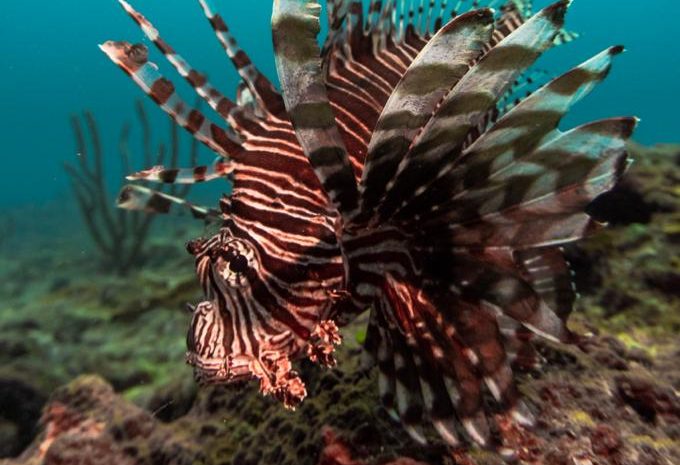Around the world, many species have surpassed the natural barriers that used to limit their geographic distribution, deliberately or accidentally driven by human actions (1). The Caribbean does not escape this reality, which threatens the natural balance of food chains and many other interactions between the inhabitants of its sea. Introduced species are synonymous with exotic or non-native species. Although the introduction of species always poses a risk to the proper functioning of the ecosystem for short or long periods (2), luckily not all species that arrive at a new place manage to establish themselves to satisfy their needs, not only for food and habitat, but also for reproduction and consequent dispersion to a greater area, which is when they become known as invasive species.
Invasive species pose a high risk to the Caribbean due to the region’s endemism, they can affect local biodiversity in many ways, whether through predation, competition, hybridization, habitat modification or even through the transmission of new diseases (3). Therefore, biological invasions are now recognized as one of the most important, least controlled and least reversible human impacts across the world (4). Invasive species also affect the biogeochemical cycles and the economic use of the ecosystems, especially when this happens at the same time as other problems that the seas and coasts are facing (5).

Source: Sergio Cambronero/www.somospelagos.com
One of the situations of greatest concern today has been the rapid invasion of the lionfish throughout the Caribbean (Pterois volitans and P. miles), originally from the Indo-Pacific Ocean and originating from an aquarium. The recognition of this invasion as an important threat has resulted in the establishment of management plans in different Caribbean countries, which include an important component of education, control and monitoring, being the scientific research a fundamental element to unite all those efforts (3). The invasion of the lionfish in the Caribbean is occurring at a very rapid rate, probably at a one never seen before (or at least never documented) in other seas around the world (6). The studies carried out have shown concern, mainly because it’s a very voracious predatory species which, in addition to its aggressiveness with the native species it feeds on, has benefited from the scarcity of large native predators, which could have functioned as natural controllers. Therefore, the establishment was benefited by the overfished and habitat loss conditions that the Caribbean region suffers. In addition to their voracity, lionfish are capable of living in different environments, including mangroves, reefs, and deeper areas where control efforts carried out by conventional fishing methods can hardly reach.
Some other cases in the Caribbean are still poorly understood, and have not receive much attention and research. One of the them is the introduction of the Asian Tiger Shrimp, Penaeus monodon, reported in different countries of the Caribbean especially during the last decade. This species was spread due to its potential in aquaculture, which raised globally, mainly between 1970 and 1980 (7; 8; 9). A regional network needs to be conducted to better understand its impacts in the Caribbean (9). Other species of crustaceans have established populations in the region, including the swimming crabs Callinectes arcuatus and Charybdis helleri, the Harris mud crab Rhithropanopeus harrisii and the alpheid shrimp Athanas dimorphus (10).

However, not only the introduction of animals might cause environmental problems. Different species of sargassum (Sargassum spp.), a large algae drifting with the currents, are causing a reduction in light and oxygen in shore waters (11). The resulting ‘brown tides’ from this algae accumulations, have caused the mortality of seagrasses and corals, both supporting a highly diverse associated fauna. According to the experts, the recovery to these negative effects might take decades and can include eutrophication of coastal waters, caused by an excesive amount of nutrients in the water (11). Recently, monitoring programs and virtual alarm platforms have been developed across the Caribbean to better inform, both to the public and scientists, about the places where sargassum is appearing.
Although the impacts of species that are introduced outside their natural habitat are not very well understood in all cases, experts prefer to treat these species as “guilty until proven otherwise”, because the delay in decision-making usually results in the spread of the invasion at a point where its control is difficult to achieve. To prevent this from happening, it is necessary to establish programs of continuous monitoring of aquatic environments and to integrate different sectors, including the scientific, political and the community, aiming for a rapid detection of possible invasions and timely mitigation of impacts.

Source: INFOBAE
References
1) Falk-Petersen, J., Bohn, T., & Sandlund, O. T. (2006). On the numerous concepts in invasion biology. Biological Invasions, 8, 1409-1424.
2) Gozlan, R. E. & Newton, A. C. (2009). Biological invasions: benefits vs risks. Science, 342, 1015-1016.
3) Graham, R., & Fanning, L. M. (2017). A comparison of eight country plans for the invasive Indo-Pacific Lionsfish in the wider Caribbean. Global Ecology and Conservation, 12, 253-262.
4) Lockwood, J. L., Hoopes, M. F., & Marchetti, M. P. (2007). Invasion Ecology. Malden: Blackwell Publishing Ltd.
5) Carballo-Cárdenas, E. (2015). Conotroversies and consensus of the lionfish in the western Atlantic Ocean. Ecology and Society, 20(3), 24.
6) Côté, I. M, Green, S. J., & Hixon, M. A. (2013). Predatory fish invaders: insights from Info-Pacific lionfish in the western Atlantic and Caribbean. Biological Conservation, 164, 50-61.
7) Sandoval, L. A., Leal-Florez, J., Taborda, A., & Vásquez, J. G. (2014). Spatial distribution and abundance of the giant tiger prawn, Penaeus monodon (Fabricius, 1798), in the Gulf of Urabá (Caribbean), Colombia, South America. BioInvasions Records, 3(3), 169-173.
8) Alfaro-Montoya, J., Monge-Ortiz, A. M., Martínez-Fernández, D., & Herrera-Quesada, E. (2015). First record of the nonindigenous Penaeus monodon Fabricius, 1798 (Penaeidae) in the Caribbean Sea of Costa Rica, Central America, with observations on selected aspects of its reproductive biology. BioInvasions Records, 4(3), 217-222.
9) Aguirre-Pabón, J. C., Orozco-Berdugo, G., & Narváez-Barandica, J. C. (2015). Genetic status, source and establishment risk of the giant tiger shrimp (Penaeidae: Penaeus monodon), an invasive species in Colombian Caribbean waters. Acta Biológica Colombiana, 20(1), 117-127.
10) Lira, C., & Vera-Caripe, J. (2016). Alien marine decapod crustaceans in the Caribbean: a review with first record of Athanas dimorphus Ortmann, 1894 (Caridea: Alpheidae). Acta Biológica Venezolana, 36(1), 1-17.
11) van Tussenbroek, B., Hernández-Arana, H. A., Rodríguez-Martínez, R. E., Espinoza-Avalos, J., Canizales-Flores, H. M., …, & Collado-Vides, L. (2017). Severe impacts of brown tides caused by Sargassum spp. on near-shore Caribbean seagrass communities. Marine Pollution Bulletin, 122(1-2), 272-281.


